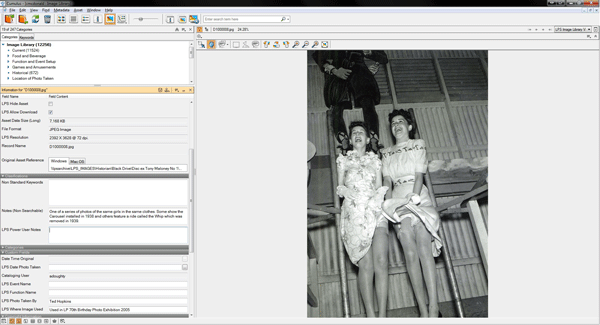DAM good fun with Cumulus
Tuesday, July 31, 2012 - 22:39

Sydney’s Luna Park has got image handling up to speed with a sophisticated digital asset management (DAM) platform from Canto Cumulus.
There are around 120 staff on the Luna Park corporate network, managing the operations of the iconic Sydney harbour theme park and function venue. The park is an increasingly popular location for concerts, corporate functions and weddings.
Keeping a database of historic images is one function of the DAM, as well as a growing library of images picturing the different configurations of the venue used in marketing the facility. The images had previously been stored on a custom image library that had been developed over a period of five years.
Craig McDonald, the Luna Park IT Specialist implementing Cumulus, said the custom solution had become unwieldy and was underutilised.
“It didn’t provide the functionality that we needed, which we now get from Cumulus”
Previously, images were stored in a wide variety of locations, on CDs and on the corporate fileserver .
A large historical database of film photographs also needed to be scanned and imported into Cumulus. Duplication of images was a major issue, with multiple copies of a single image occurring in different locations.

To remove the duplication in an automated fashion, Luna Park employed a software solution called Easy Dedupe (www.easyduplicatefinder.com) that scans a store of files and compares files by comparing metadata and file size to identify likely duplicates. Then the user can select the one file that they want to keep. This was able to remove gigabytes worth of duplicates over different departments and Luna Park was left with around 35,000 files to import.
The job of deduplicating, importing and cataloguing all the images with associated metadata will eventually take around 12 months to complete, and when IDM visited the job was about a third of the way done. The DAM project required six months of design and setup before Cumulus was deployed.
The metadata challenge for categorising images stored on the DAM was complicated by the different levels of copyright for different images. In some cases the copyright for images is owned by Luna Park, whereas for pictures showing a particular function has been setup for a particular client, the copyright is retained by the function organiser.
In December 2011 Luna Park upgraded from the Workgroup version of Cumulus 8 to the full Enterprise edition and expanded from 3 to 10 client licenses.
This provided better user administration for the IT department enabling better integration with Active Directory with “Roles” and “Extended Permissions” giving permissions at an asset level not just at the catalog level.
On the roadmap is a push to begin adding a large library of multimedia content to the DAM. This will include TV rushes from commercials, the raw shoots of TV advertisements, as well as radio commercials, and other audio content.
“We needed a DAM that allows us to document the historical information we know about an image in the metadata, however the image library is just one part of what Cumulus will be used for in the long run.”
“It will also become our document management platform, we will import policies and procedures, venue plans, construction & architectural diagrams that currently sit on our fileserver. Having them available via the DAM will improve search and access.”
There is a lot of paperwork involved in running an Amusement park. Each ride needs to be inspected daily before the park operations and a signed report kept on file. These documents are currently scanned to file once a month then compiled onto a CD along with reports from catering and First Aid and other departments.
Ultimately the DAM will also act as a way to provide public access to content that is able to be shared, such as historical images of the park, once the Cumulus Sites Web access module is deployed during 2012.
This will give students access to images and information about Luna Park Sydney for school projects and assignments as well as sending potential clients images of function setups in the venues.
“The sooner you switch to a system like Cumulus the better you are off. We have experienced a lot of pain in deduplicating our image archive so the sooner you make the decision to go a DAM the better,” said McDonald.
“After we had grown frustrated with the existing image library, we did some research and found Cumulus.
“Once we contacted DataBasics they had a technician come down and spend four days with us to get us started, the install only took one day and the rest was training to make us self-sufficient. Throughout the implementation period we needed assistance in setting up custom record fields and additional record view sets which the support team from DataBasics was always there for with a speedy response.”
Cumulus was installed on its own virtual server with large amount of storage space and will be used across Windows XP, Windows 7, and Mac OS X platforms.
